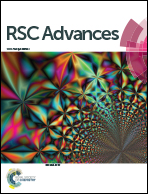Arginine–glycine–aspartate (RGD)-targeted positron-labeled dendritic polylysine nanoprobe for tumor PET imaging
Abstract
This work investigated the optimization of the 68Ga radiolabeling of the dendritic polylysine-1,4,7-triazacyclononane-1,4,7-triacetic acid conjugate (DGL-NOTA). Under pH = 4.0, reaction temperature of 70 °C, and incubation time of 10.0 min, the conjugate (DGL-NOTA) radiochemical yield was between 50% and 70%. After separation and purification, the radiochemical purity was greater than 98%. The radiolabeled formulation (68Ga-NOTA-DGL-PEG-RGDyC) remained stable in both phosphate buffer and serum (all radiochemically greater than 95%) for up to 2 hours with a specific activity of 30 GBq/μmol. Cellular experimental studies have shown that radiolabeled preparations can rapidly enter U87MG cells, and after 2 hours, there was still retention of imaging agents in the cells. In vivo distribution studies had shown that the tracer is excreted by the kidneys. Two hours after injecting the imaging agent, the U87MG tumor tissue uptake value was (4.67 ± 0.09)% ID/g. Positron emission tomography (PET) imaging in animals showed that 68Ga-NOTA-DGL-PEG-RGDyC had good targeting and can be enriched in tumor sites. Through hemolysis testing and morphological changes of red blood cells, it was proved that NOTA-DGL-PEG-RGDyC has good blood compatibility.



 Please wait while we load your content...
Please wait while we load your content...